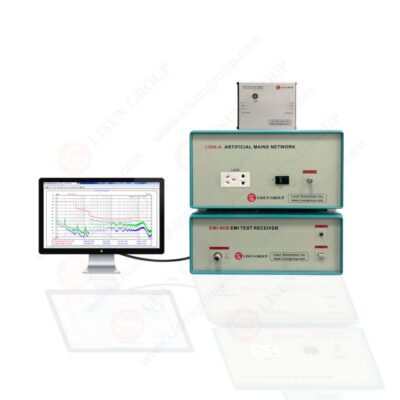

Electromagnetic Interference (EMI) is a critical issue in electronic device design and manufacturing, as it can disrupt the functionality of both the device itself and nearby equipment. Conducted and radiated interference tests are essential components of the electromagnetic test process, ensuring that devices comply with regulatory standards. This paper explores the use of the electromagnetic test system, specifically the LISUN EMI-9KB EMI Test Receiver, in evaluating conducted and radiated EMI. Detailed methodologies, key test parameters, and real-world applications in various industries are discussed.
Introduction
With the increasing complexity of electronic devices, EMI poses a growing challenge in ensuring that products meet compliance standards and do not interfere with other devices. EMI testing is vital for manufacturers to identify and mitigate interference, ensuring that devices meet regulatory requirements such as CISPR, FCC, and other international standards. The electromagnetic test encompasses both conducted and radiated EMI testing, crucial for evaluating a device’s electromagnetic compatibility (EMC).
The LISUN EMI-9KB EMI Test Receiver is a versatile instrument designed for comprehensive EMI testing. Its advanced features make it suitable for both conducted and radiated interference measurements, providing accurate and reliable data that helps manufacturers address EMI issues early in the design and production stages.
Overview of Electromagnetic Test
Electromagnetic tests for EMI involve two primary components: conducted and radiated interference testing.
• Conducted EMI Testing: Measures the electromagnetic noise that is transferred from the device under test (DUT) to the power lines or other connected cables. This type of interference can affect other devices connected to the same power network.
• Radiated EMI Testing: Assesses the electromagnetic energy emitted through the air from the DUT, which can impact the operation of nearby electronic devices.
These tests are essential to ensure that electronic products are safe and function as intended in their operational environments.
LISUN EMI-9KB EMI Test Receiver
The LISUN EMI-9KB EMI Test Receiver is a high-precision instrument designed for electromagnetic test applications, particularly in detecting and analyzing conducted and radiated EMI. It complies with international standards, including CISPR 16-1, GB/T 6113-1, and EN 55016-1-1, making it suitable for global compliance testing requirements.
Key Features:
• Frequency Range: 9 kHz to 30 MHz for conducted emissions and up to 1 GHz for radiated emissions.
• High Sensitivity and Accuracy: The receiver provides precise measurements with low noise levels, crucial for detecting subtle interference.
• Automated Testing: Integrated software automates the test process, enhancing efficiency and reducing human error.
• Data Analysis and Reporting: The system offers comprehensive data logging and reporting capabilities, facilitating in-depth analysis of EMI test results.
Applications in Conducted EMI Testing
Conducted EMI testing is performed to ensure that the DUT does not introduce harmful interference into the power lines. The LISUN EMI-9KB system uses a Line Impedance Stabilization Network (LISN) to provide consistent impedance and measure the noise generated by the DUT.
Case Study: Testing Household Appliances
Household appliances such as washing machines and refrigerators are prone to generating conducted emissions due to their motor-driven components. The LISUN EMI-9KB can evaluate these emissions to ensure compliance with standards such as CISPR 14-1.
Test Parameter
Value
Standard
Pass/Fail Criteria
Frequency Range
150 kHz – 30 MHz
CISPR 14-1
Emissions < Limit Line
Peak Detector Level https://www.lisungroup.com/news/technology-news/electromagnetic-test-for-emi-conducted-and-radiated-interference-using-lisun-emi-9kb-test-receiver.html


Comments
Post a Comment